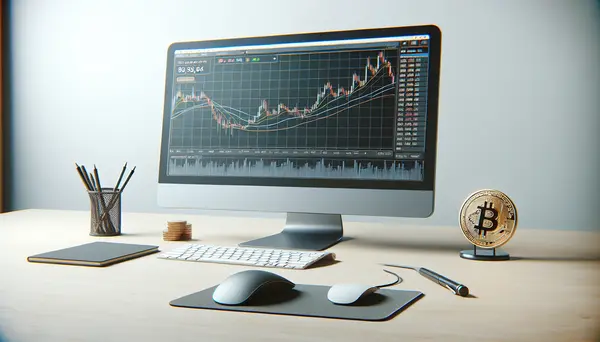Commodity
Commodity
Understanding the Term "Commodity"
When we talk about trading, the term commodity often comes up. But what exactly is a commodity? In the most basic terms, a commodity is a basic good used in commerce that is interchangeable with other goods of the same type. These goods are often used as inputs in the production of other goods or services. Let's dive a bit further into the term and discover the world of commodity trading.
The Basics of Commodities
Commodities are usually split into two main types: hard and soft. Hard commodities are those that are mined or extracted, like gold, oil, and natural gas. Soft commodities, on the other hand, are typically agricultural products or livestock, such as corn, wheat, or pork.
The universal nature of these goods means that their prices are dictated by global supply and demand. When the demand for a commodity rises, the price also increases, and when the supply of a commodity increases, the price falls.
Commodity Trading
Commodity trading takes place in commodity markets. Initially, commodities were traded directly in a physical marketplace, by the exchange of the commodity for money. But modern commodity markets use futures contracts to trade. It means traders invest in futures agreements for delivery of commodities at a later date.
The Importance of Commodity Trading
Commodities form an essential part of our daily lives. Items like coffee we drink, the oil used in cars, or the gold in jewelry are all commodities. Trading commodities is a way of diversifying an investment portfolio beyond traditional securities like shares and bonds. Additionally, commodities trading can provide a hedge against inflation, as commodity prices often rise when the overall cost of living increases.
Blog Posts with the term: Commodity

Levex, or leveraged trading, allows traders to increase market exposure and potential profits using borrowed funds but also amplifies risks. It requires a strong understanding of trading fundamentals and robust risk management strategies due to the heightened potential for both...

LedgerX is a regulated financial platform established in 2013 that offers cryptocurrency derivatives such as options, futures, and swaps to both retail and institutional investors. It provides a secure trading environment with features like mini contracts and physical settlement, catering...

Welcome to an exploration of the history of trading, from its earliest forms to the sophisticated systems we have today. This article breaks down the evolution of trading, from barter to blockchain, and discusses the advantages and disadvantages of each...

Leveraging ETFs is a strategy that allows investors to enhance their exposure to a particular market or asset class. By borrowing funds to increase investment capital, investors can potentially amplify returns. However, leveraging also comes with increased risk and the...

Bitcoin trading, although it may seem complex at first, follows the same basic principle as any financial investment: buy low and sell high. This article aims to demystify Bitcoin trading by providing a simplified explanation of its basics, exploring its...

This article serves as a beginner's guide to ETF trading, explaining what ETFs are, how they work, and their benefits and drawbacks. It also provides step-by-step instructions on how to start trading ETFs by determining investment goals, selecting the right...

The MACD Indicator is a powerful tool used by traders to predict market momentum shifts. It consists of three main components: the MACD line, the signal line, and the MACD histogram. By understanding and effectively using the MACD Indicator, traders...

The article discusses the rise of cryptocurrency ETFs as a bridge between traditional finance and the world of cryptocurrencies. It explains how ETFs work, the pros and cons of investing in crypto ETFs, and the potential impact of crypto ETFs...

Bitcoin margin trading involves borrowing funds to increase buying power, amplifying both potential profits and losses. Traders must understand leverage ratios, maintain initial and maintenance margins in their accounts, and manage the high risks associated with cryptocurrency's volatility....

The U.S. regulatory framework for Bitcoin trading is complex, with multiple federal agencies like the SEC, CFTC, and FinCEN involved in creating guidelines that impact taxation, securities classification, and anti-money laundering efforts; state-level regulations vary widely. Recent legislative initiatives aim...

The UAE has become a significant center for Bitcoin trading, with advanced tools and platforms available for various trading methods in supportive regulatory environments like the DMCC. Traders must navigate regulations set by the SCA and stay informed on legal...

The legal landscape of Bitcoin trading varies globally, with each country setting its own rules regarding legality, usage, and taxation; traders must understand these differences and the implications of how Bitcoin is classified. It's crucial for compliance to stay informed...

This article introduces readers to the world of Contracts for Difference (CFDs), a form of trading that allows investors to speculate on the price movements of assets without actually owning them. It provides a basic understanding of CFD trading, including...

This article provides a comprehensive guide to Bitcoin trading, explaining the concept of Bitcoin as a decentralized digital currency and its underlying blockchain technology. It also discusses different methods of Bitcoin trading including day trading, swing trading, scalping and investing...

Blockchain technology, originally developed for Bitcoin transactions, has evolved into a decentralized digital ledger system that enhances transparency and security across various industries by eliminating the need for trusted third parties. Its applications have expanded from simple cryptocurrency exchanges (Blockchain...

